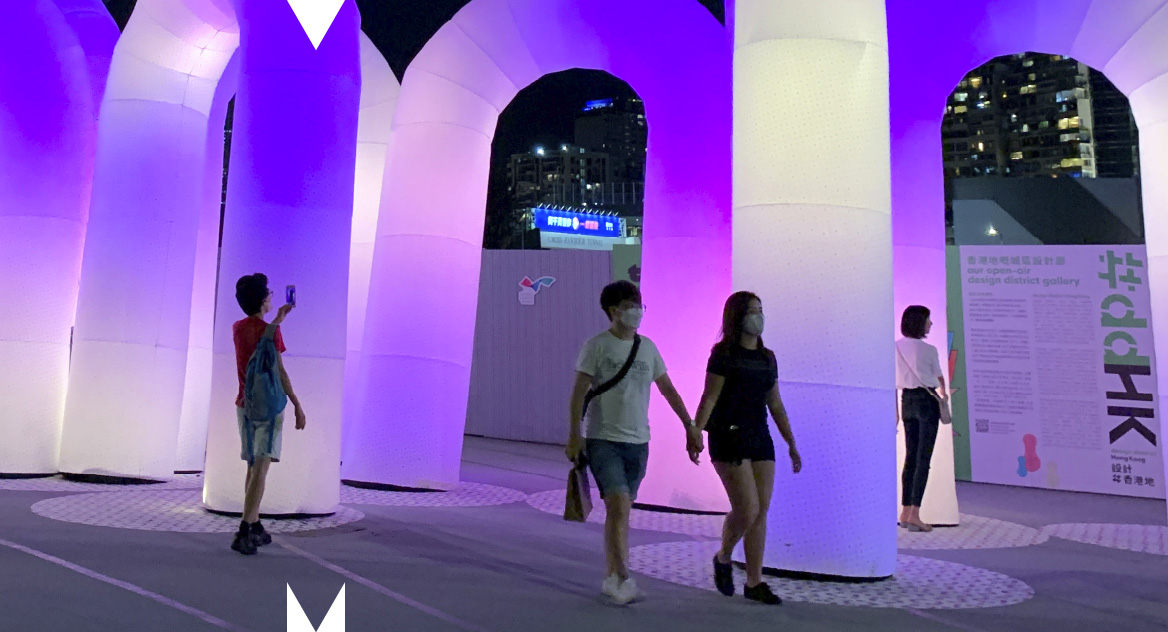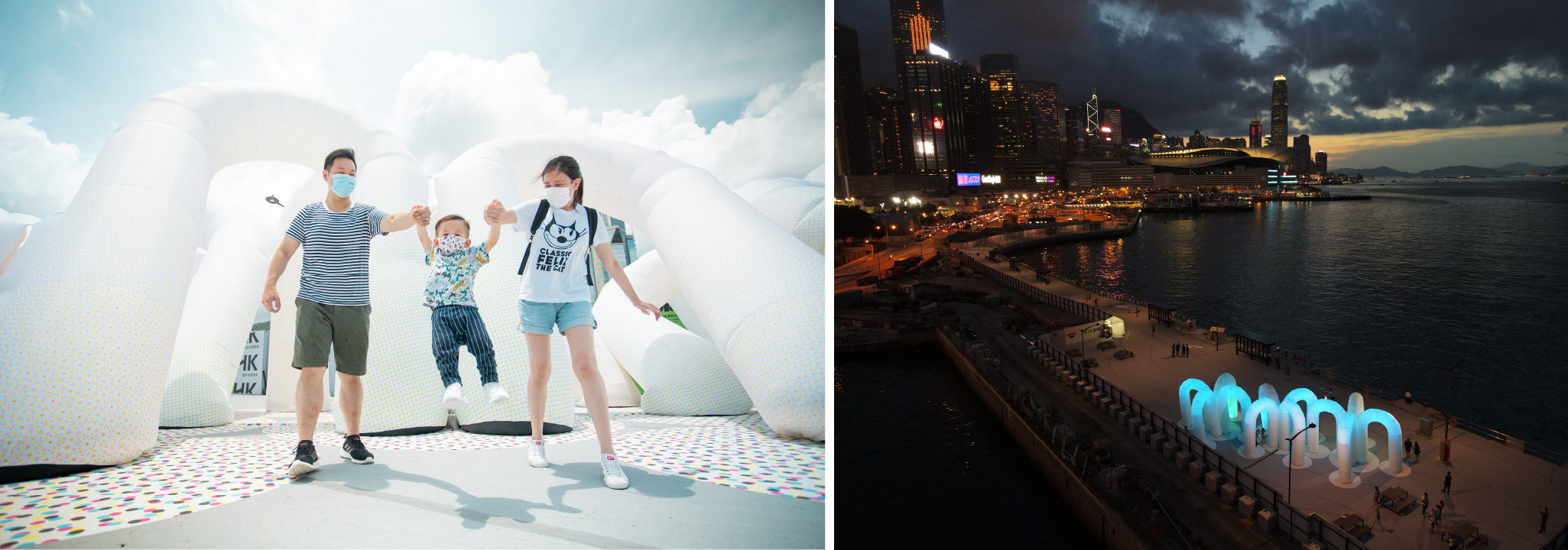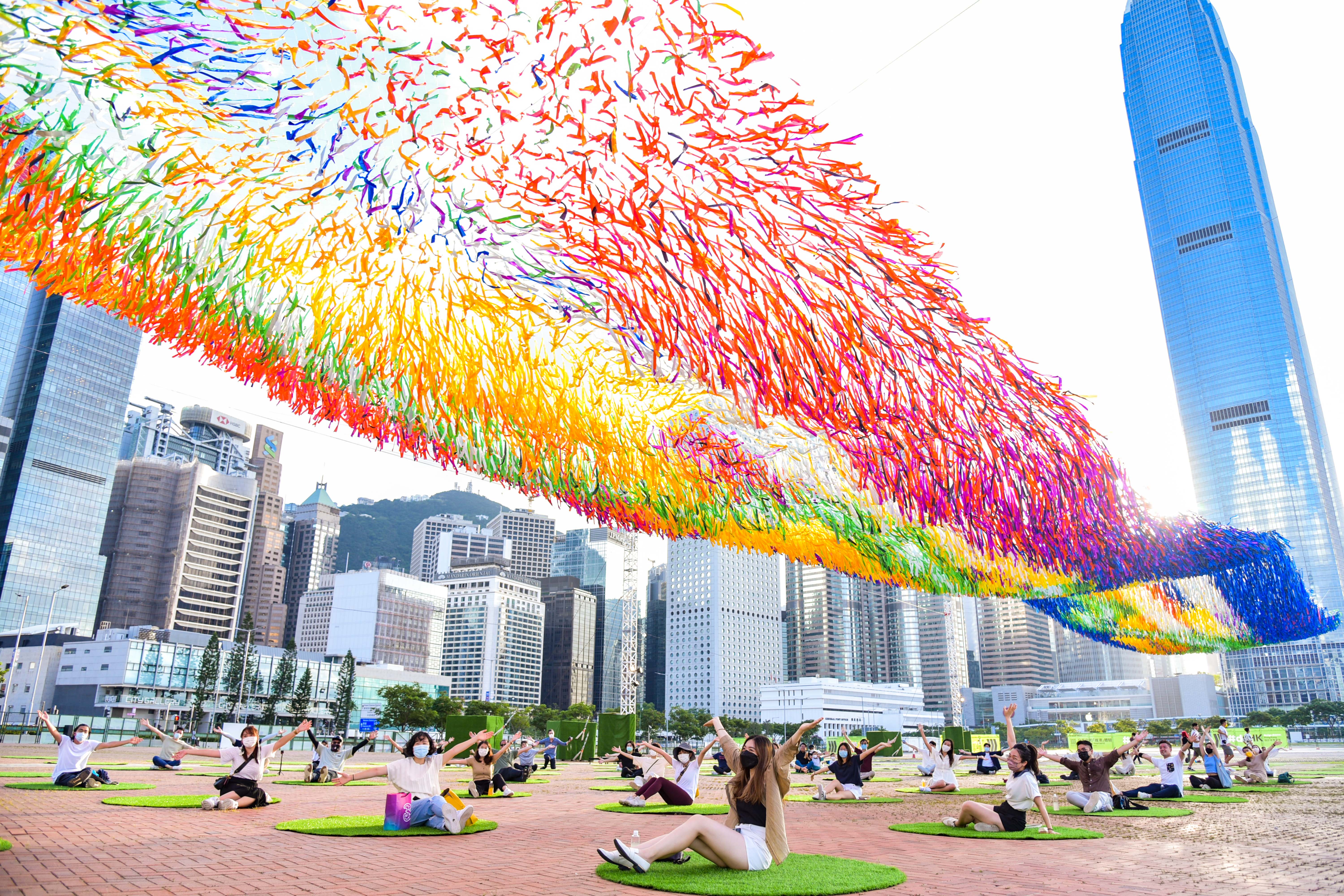Transforming Places for Public Enjoyment and Wellbeing

Turning a ‘space’ into a ‘place’ is one of the key tenets of placemaking. Design District Hong Kong's (#ddHK) mission to activate public spaces and engage people within them has been embraced through its placemaking project, transFORM. This featured seven design installations along Victoria harbourfront to awaken visitors’ senses to the space’s beauty and versatility, running from June to July this year.
As one designer, One Bite Design Studio co-founder Alan Cheung says, “Placemaking can be a useful tool to reinvent the public realm for city dwellers to enjoy. We cannot omit our daily life and enjoyment from the public realm. More importantly, elevating the quality of such can enhance the physical and mental wellbeing of everyone.”
Placemaking relies on evoking emotion to create attachment and inspire imaginations. In Hong Kong, this is inherently connected to a sense of community, purpose, and heritage.
Placemaking can be a useful tool to reinvent the public realm for city dwellers to enjoy. We cannot omit our daily life and enjoyment from the public realm.
Pride and contentment
 “The Lead” captures the spirit of the traditional Tai Hang fire dragon dance, as a blessing for Hong Kong during the pandemic.
“The Lead” captures the spirit of the traditional Tai Hang fire dragon dance, as a blessing for Hong Kong during the pandemic.
The Tai Hang Fire Dragon Dance, an auspicious annual event in Hong Kong, was unfortunately cancelled in 2020 due to Covid-19. As part of #ddHK transFORM, One Bite created The Lead, an installation along the harbourfront of Causeway Bay Typhoon Shelter capturing the spirit of the fire dragon, as a blessing for Hong Kong during the pandemic. “In times of turbulence, everyone feels alone. The pandemic has distanced people from each other. We hoped our work could soothe the stress and loneliness of visitors as they walked past the waterfront, bringing back a sense of joy and togetherness,” says Alan.
We hoped our work could soothe the stress and loneliness of visitors as they walked past the waterfront, bringing back a sense of joy and togetherness.
Happiness and amusement
One impact of the pandemic has been a decrease in mobility and opportunities to explore places overseas. This inspired the team from Australian multimedia design studio ENESS and home-bred design and production team Hattrick Creative to create fun places for people in the city. As Hattrick Creative project director Man Wong says, “Placemaking can make an unknown place very popular. Not only does it gather different people to share a public space; it also encourages people to explore the history and culture of a place.”
 Combining art and technology, the interactive arch-shaped installation “Sky Castle” delighted visitors by encouraging a new enjoyment of the Wan Chai Promenade.
Combining art and technology, the interactive arch-shaped installation “Sky Castle” delighted visitors by encouraging a new enjoyment of the Wan Chai Promenade.
The Sky Castle installation took that concept a step further, with an inclusive and accessible installation that welcomed people of all ages, from all walks of life, to enjoy the space together. Multi-sensory, with music, lights, and structures, Sky Castle encouraged a new enjoyment of the Wan Chai Promenade, breathing life into a previously ordinary space. “Nowadays people can’t travel abroad. They only visit good places in Hong Kong on holidays. If we can invigorate the city with fascinating local designs, people can explore more of the uniqueness of Hong Kong,” says Man.
Not only does it gather different people to share a public space; it also encourages people to explore the history and culture of a place.
Peacefulness and serenity
 “River of Light” added a dynamic yet tranquil presence to the bustling harbour, like the flowing water of traditional Chinese gardens.
“River of Light” added a dynamic yet tranquil presence to the bustling harbour, like the flowing water of traditional Chinese gardens.
A truly limelight-stealing project among the #ddHK transFORM installations was River of Light: a kinetic sculpture comprising more than 45,000 colourful streamers stretching across 700 square metres of air. Installed at the Central Harbourfront Event Space and commissioned from US-based artist Patrick Shearn, River of Light provided a chance to embrace outdoor open-air spaces in new ways—which was especially welcome considering social distancing measures. Shearn was clear about the emotions he sought to evoke: “I hope that people experiencing River of Light will come away with a deeper sense of calm and an appreciation of the natural forces at play around us that we are oblivious to in our normal daily life.”
I hope that people experiencing River of Light will come away with a deeper sense of calm and an appreciation of the natural forces at play around us that we are oblivious to in our normal daily life.
 The sensory design works of “Nature Therapy” created a journey for visitors to immerse in the beauty of nature and pay attention to their surroundings.
The sensory design works of “Nature Therapy” created a journey for visitors to immerse in the beauty of nature and pay attention to their surroundings.
The nature theme was popular with many designers, including Milk Design, whose Nature Therapy exhibition was inspired by how green spaces can enliven the senses and provide a feeling of calmness and acceptance. As Milk Design founder Lee Chi Wing describes, “A good design is not just about meeting functional and material needs, but also meeting emotional needs.” Through Nature Therapy, Wing wanted to encourage people to slow down and pay attention to their surroundings. This series of sensory design works utilised the characteristics of promenade parks and the essence of Chinese gardens to create an interactive journey. “Our work served to encourage people to return to nature and feel its balance and beauty.”
A good design is not just about meeting functional and material needs, but also meeting emotional needs.
Future momentum
HKDC is passionate about spreading the positive impacts of these placemaking projects far and wide into the community. Appointed as design thinking advisors in “POSsible!” – Public Open Space Action Lab supported by the Architectural Services Department, HKDC will champion a series of design thinking workshops and a symposium from November 2021 to April 2022 to discuss future opportunities to innovate in public open spaces. Insights of participants will be distilled into tools and design guides that can be used when employing a design thinking approach to designing public open spaces in the future.
This is such a positive step forward for embracing design thinking as a city, with practitioners, stakeholders, and the public taking the journey together. So, watch this space—there’s many more wonderful placemaking projects for Hong Kong on the horizon.